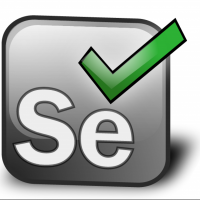3 Key Elements of the Open Source Mindset

Like agile or any other new methodology, adopting open source tools into your team isn’t a seamless, pain-free process. The benefits can be invaluable, but it’s important to note that most companies moving from packaged tools into the open source world often go through a technology shock.
According to David Dang of Zenergy Technologies, this is when the automation specialist or engineer needs to be much more technical than before, and the team has to understand that while open source tools can be very mature, they’re rarely fully featured. There’s a certain reliance on the community to round out the features of these tools.
So, the question becomes, “How do you avoid this technical shock and bring open source tools into your team as seamlessly as possible?”
Dang points to three main aspects for open source transition: people, process, and planning. It sounds dangerously simple when you break it down into three words, but really, as long as you have an action plan and an understanding of what you’re working with, the process can go smoothly.
When it comes to people, as previously mentioned, you need to make sure you have technical team members who are ready, willing, and able to unlearn much of their knowledge of packaged tools in order to take on the open source mindset. The collaborative and iterative nature of open source tools isn’t quite as cut and dry as what can be found in the packaged sector, so in order to transition, you need technical people with open minds for open source.
This ties right in to the planning segment of this three-headed beast. Since the people on your team will have to go through an adjustment period, plan for a significant learning curve. Does that mean it’ll take months and months for everyone to become comfortable with open source? Not always, but beginning the process with the notion that yes, this is a big change that can take quite a while to grow into will help keep everyone patient and willing to learn.
Lastly, Dang explains how to handle the open source process.
“You still have to plan out your framework. How you're going to approach automation. Where is the data stored? All that stuff has to be in place so that you will have the re-usability from test automation,” Dang tells StickyMinds. “Automation is not effective if you are doing it one time. Automation is effective if you can somehow reuse the asset that you built, that you can expand on later on, or reuse later on.”
You need to be more than willing and able to adopt open source tools—you have to be educated. If you understand the hill you have to climb, now might be the perfect time to make the switch.

